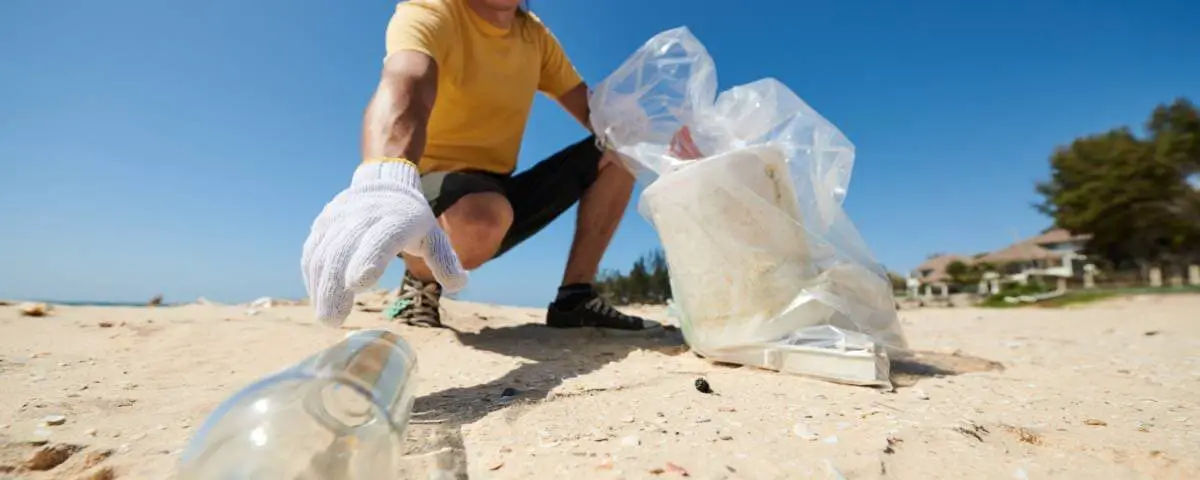|
Getting your Trinity Audio player ready...
|
Based on trends in reportage, it’s hard to imagine humans can have positive and negative impacts on the environment. That is because we are all aware of the harm done to the planet by humans, whereas the good news gets less attention. But what human activity has had the most positive impact on the environment?
The most positive human impact on the environment is the reversal of environmental destruction through remedial actions. These include recycling, conserving water, improving energy efficiency, cordoning off sensitive ecosystems, planting trees, and passing environmental protection laws.
This article explores the most successful efforts at reversing the negative impact of human activity on the environment.
Keep reading to learn more. It may surprise you.
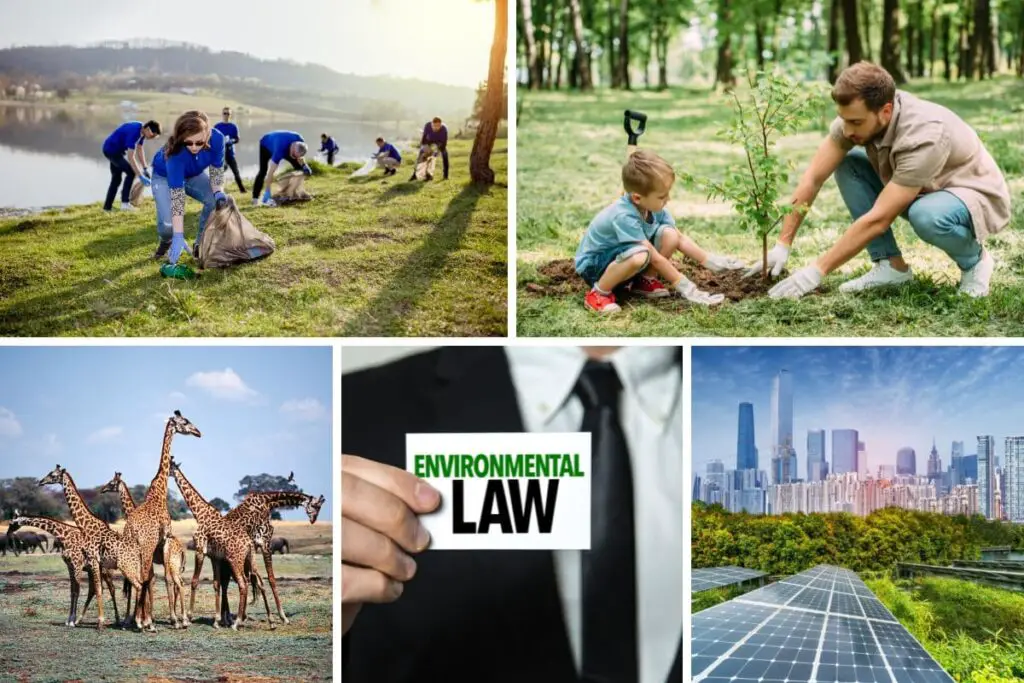
Positive Human Impact on the Environment
Reversing Long-Term Environmental Harm
7.97 billion people call planet Earth home today. So it’s no wonder we’re overexploiting our natural resources and generating excess waste.
Overpopulation, urbanisation, and reliance on constant economic growth to feed burgeoning human populations have inevitably led to deforestation. In turn, the tragic loss of fragile ecosystems has displaced wildlife and even driven several species to extinction.
Then there’s industrialisation and its detrimental effect on the environment. Over decades, the discharge from factories and automobiles has polluted our skies and water bodies. Pesticides have contaminated the soil in which we grow our crops.
But it’s not all doom and gloom. Despite humanity’s largely negative impact on the planet, humans today are leading heroic efforts to redeem the earth and preserve it for future generations.
Reversing the Damage we have done
The most positive impact humans are making on the planet today is reversing the damage caused by their past actions.
The many ways humans today are redeeming their planetary legacy include:
- Recycling Paper & Plastics
- Reusing Materials to Manage Waste
- Conserving Water
- Building Marine Parks
- Building Wildlife Reserves
- Building Green Cities
- Passing Environmental Protection
- Innovating Sustainable Solutions
Recycling Paper & Plastics
Recycling materials is the process of turning waste materials into new products instead of throwing them away. It is one of the most impactful positive actions humans have taken over the past century.
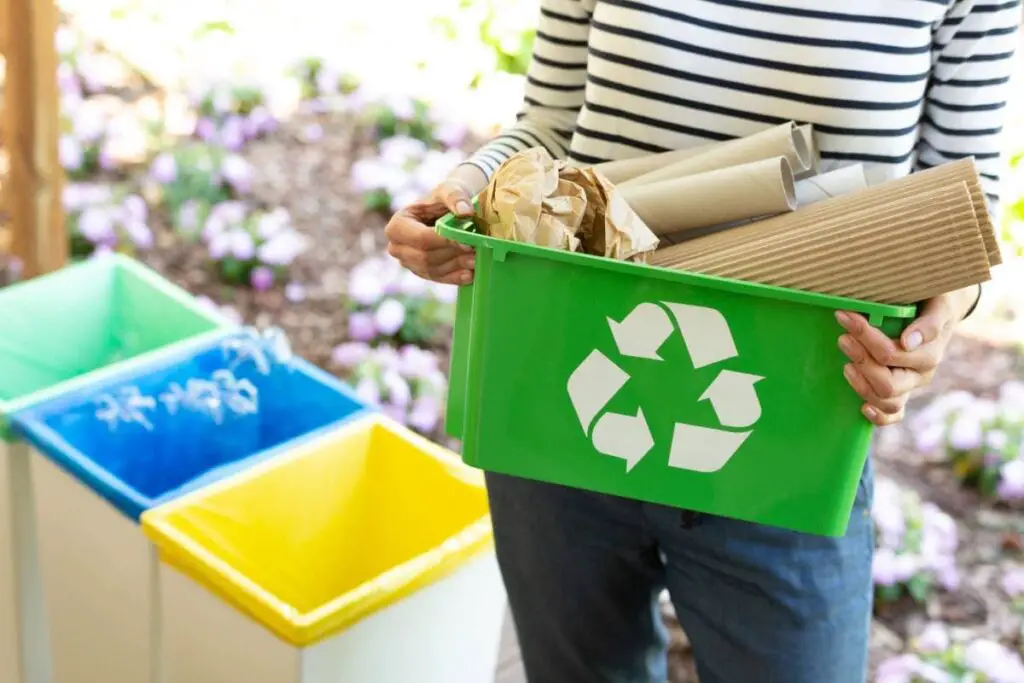
Excessive human consumption of scarce natural resources is at the root of the adverse human impact on the environment. It also generates vast amounts of waste.
The waste generated by humans usually ends up in landfills, oceans, and waterways. It adversely affects ecosystems and all the species that live in them, including humans. Worse, since such materials are often non-biodegradable, they continue to pollute the environment for years to come.
In many countries, the waste in landfills is burned to create space for more waste that continues to come in. This produces greenhouse gases that contribute to overheating the planet.
Understandably, any activity which limits or reverses these harmful outcomes is helpful.
Importance of Eliminating Waste
By eliminating environmental waste, recycling helps reduce air and water pollution, making habitats safer for future generations. Recycling also conserves natural resources by requiring fewer raw materials to be extracted from the environment.
Thanks to the work of advocates for environmental awareness, many major companies are now adapting policies that promote responsible consumption of goods. Some companies have made the shift from non-biodegradable to biodegradable packaging.
They have also made drastic changes to their messaging, encouraging consumers to recycle packaging materials. Cumulatively, many such minor changes add up to make a substantial positive impact on the environment.
With some luck, such aspects of responsible consumerism will continue to be adopted by more and more individuals, businesses, and governments, until they become the standard universal practice.
Reusing Materials To Manage Waste
Reusing non-perishable items has a similarly positive impact on the environment as does recycling. In fact, they are very close ideas in principle. The difference lies in the particulars of how materials that might become waste are reused.
Recycling turns materials into new products, while reusing foregoes the process of turning things into new products. Instead, materials are used multiple times, thereby reducing the use of raw materials to create new products.
The success of environmental protection campaigns is evident in the way more and more corporations are now designing their packaging to be reusable or refillable. At the same time, responsible consumers increasingly demand multiple-use products.
Products that can be reused stay in circulation longer. Therefore, it takes much longer before they clog up rivers or are sent to landfills.
Other examples of reusing materials include replacing disposable utensils, water bottles, and straws with non-disposable alternatives. For instance, replacing plastic straws with bamboo ones can have a significant impact if implemented at scale.
Conserving Water

Conserving water is another way humans have made a positive impact on the environment. The thoughtful use of water as a resource doesn’t only save water; it also conserves energy, as massive amounts of energy are needed to filter, process, and pump water for entire populations.
In recent years, large-scale efforts at water conservation have helped local populations save energy and reduce their carbon footprint. Using less water ensures more water remains in circulation in our ecosystems, where other species of plant and animal life depend on it for survival.
Building Marine Parks
As oceans and rivers have become more polluted over the years, Marine parks have become increasingly vital to the preservation of aquatic species.
Many marine parks are also Marine Protected Areas (MPAs). MPAs are expanses of the ocean in which governments restrict human activity to protect marine ecosystems and the species that call them home.
They are usually divided into zones where limited activities are allowed. For instance, some MPAs allow for recreational activities such as boating, snorkeling, and diving. Others allow sport and commercial fishing in specific zones.
Typical examples of Marine Parks that have significantly impacted the surrounding ecology include the East End Marine Park in the U.S. Virgin Islands and the Kisite Mpunguti Marine Park in Kenya.
Building Wildlife Reserves
Wildlife or nature reserves, like MPAs, are areas of protected land or water where wildlife can thrive in its natural habitat while enjoying government safeguards against land development, industrialisation, and hunting or poaching.
These reserves are usually managed by governments or non-profit organisations seeking to promote the conservation of species and their habitats.
Building Green Cities
Greener cities are helping human beings take giant strides towards saving the planet. They are designed to increase the sustainability of urbanised areas so that future generations of inhabitants don’t inherit a world critically depleted of natural resources.
Urban planning in green cities involves developing green infrastructures. One example of this kind of infrastructure is energy-efficient buildings that use less energy to keep them cool.
Other steps toward making cities greener include making them more commuter-friendly to reduce the volume of vehicular traffic. Similarly, planning green spaces throughout the city is another key component of urban planning for greener cities.
Passing Environmental Protection Laws
One of the most positive human impacts on the environment has been to enact and enforce laws that protect the environment. Legislation that supports sustainability, industrial responsibility, and the downsising of the overall carbon footprint can all go a long way in ensuring that future generations still have a planet to call home.
Innovating Sustainable Solutions
The innovations made in the past few decades to reverse the detrimental effects of human activity on the environment are outstanding. Some of the world’s greatest minds have focussed on finding sustainable solutions that will save the planet.
The use of shade balls to conserve water and energy in Los Angeles, and the water de-polluting systems developed in recent years, are excellent examples of such innovation.
Other Ways That Humans Have Helped the Environment
Humans have helped the environment for millennia, beginning in our nomadic days.
We hunted, keeping animal populations in check, and we spread seeds as we moved around. Plants and trees survived as we provided them with carbon dioxide.
We know what we’ve done wrong. Now, we must reflect on what we’re doing right and continue in the hope of saving our home.
Reforestation Efforts
Even in nomadic days humans had a positive impact on the environment.
Planting trees wasn’t intentional. But as we ate walnuts, mulberries, and apples, their seeds were cultivated through our digestive system. Human impact on the environment was low, as we had not populated the earth to any great extent, and we had yet to create the industrial complex.
When the human population expanded into the industrial age, some of our activities led to the destruction of natural environments, particularly forests and oceans. Years of ignorance and wilful neglect have caused massive environmental harm.
But, science has taught us of the devastating impact deforestation has had on the environment. And we have developed reforestation organisations and programs which are having a positive impact.
The Effects of Planting Trees
Through these efforts, we planted nearly 160 million trees every month. By planting trees to make up for deforestation, we can move in the right direction toward;
- adjusting atmospheric carbon dioxide levels
- reducing air pollutants, and
- providing habitats for different species across the globe.
Not only that, but trees help prevent soil erosion, flooding, and landslides.
Though it’s estimated that only 40% of the trees destroyed every year are being replaced at the current rate, we continue to push reforestation efforts hoping to accelerate the re-establishment of healthy forest structures.
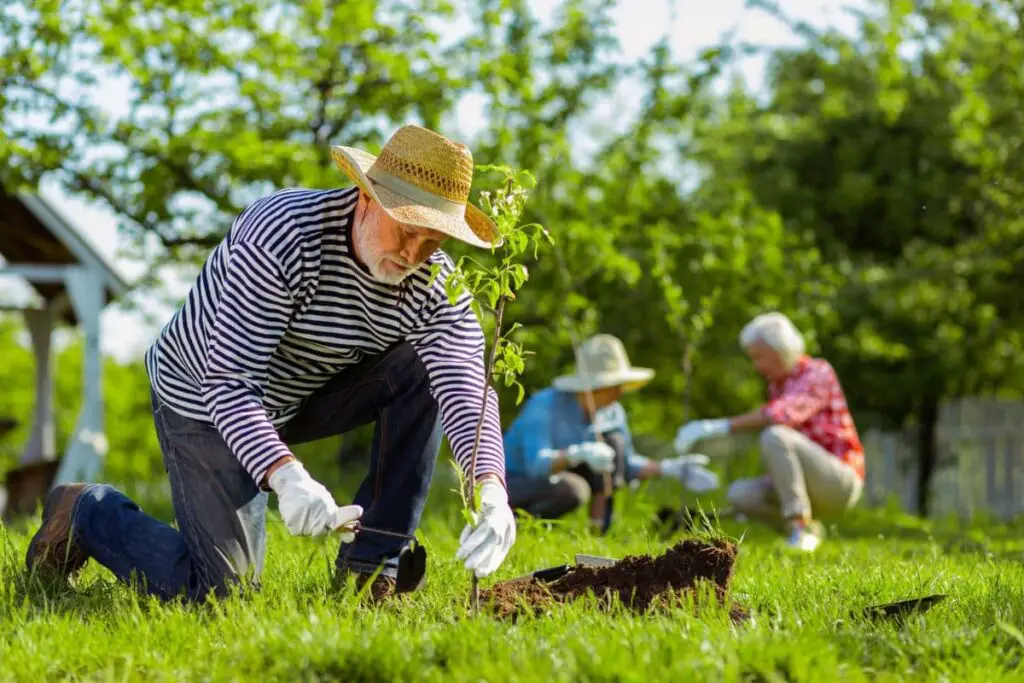
Supporting Endangered Species
By protecting natural habitats and endangered species, humans have protected plants and animals. We have established parks, wildlife refuges, and other protected green spaces. And even within densely populated urban areas, this action promotes safe living spaces for wildlife.
There are programs that protect and support these wildlife habitats and include endangered species. Plus, there are classes that teach about the importance of these programs.
Humans have had a hand in saving dozens of endangered species through conservation efforts. In fact, it’s estimated that humans have saved up to 48 species from extinction.
You can learn more about five species humans have saved from extinction, in this fascinating YouTube video.
The Move towards Clean Energy
The world is working hard to move away from fossil fuels and on to Renewable Energy to help reduce carbon emissions and slow the pace of climate change.
Countries across the world have set goals for renewable energy, and many have met or surpassed those targets:
- Sweden reached their goal of using at least 50% renewable energy by 2012.
- Costa Rica produced 90% of its electricity from renewable resources by 2021.
- Scotland used renewable energy to produce 97% of its electricity in 2020.
- China, despite being the world’s biggest carbon-emitting country, is the world leader in wind and solar energy production.
- United Kingdom – power from fossil fuels decreased by 40% from 2010 to 2021. The Environment Agency encourages communities and businesses to reduce their carbon footprint.
- USA is far behind in terms of switching to renewable energy, with only 12.5% of renewable resources in 2021. However, renewable energy sources surpassed coal in 2019, which was the first time since the 1970s. But the United States still works hard to encourage clean energy use. The Environmental Protection Agency (EPA) has multiple renewable energy and energy efficient programs to encourage and help consumers in all sectors of the economy switch to power from renewable resources.
Humans Can Continue Their Positive Impact on the Planet
With each passing year, the situation becomes more serious, so we can’t stop now.
We must continue the work to save our planet if we want to sustain it. We cannot sit idly by and allow ourselves to destroy our homes, our medicine, our food, and our life.
So, how can we continue to have a positive impact on the health of our planet?
Ways To Positively Impact The Environment
Climate change comes with devastating consequences to the environment, but we can improve the situation.
- Change Your Transportation: Instead of driving a vehicle, opt for walking, riding a bike, or using public transport. If a car is an absolute must, take part in ride-sharing programs to reduce greenhouse gas emissions.
- Shop Smart: Buy local, and avoid buying what you don’t need to prevent waste. Purchase less plastic and use reusable shopping bags, water bottles, and straws. Purchase locally grown, in-season produce. Eat less meat and dairy products and buy organic when possible.
- Repurpose Items: Recycling is great, but reusing has the greatest positive impact. You can use different everyday items to create new projects to avoid them ending up in landfills. This is effective economically and environmentally.
- Conserve Water: When brushing your teeth, turn off the water. Avoid overusing lawn sprinkler systems or taking long showers. When possible, use rainwater harvesters to cut back on water use.
- Avoid Pollution: Pollution affects plants, animals, and our natural resources, including our water, air, and soil. Simple efforts help reduce pollution, from avoiding pesticides and fertiliser to picking up litter and minimising the use of outdoor lights. These small steps can make a big difference.
- Reduce Energy Use: When not in use, turn off lights and electronics. Opt for candles or solar lights where possible, or use energy-saving light bulbs. On warm, sunny days, hang your clothes to dry instead of using a dryer. When it’s hot, use fans instead of the air conditioner. When it’s cold, dress in layers to stay warm and turn the heat down.
Spread the Word
Tell other people about conserving nature. Start a website, blog, podcast, or YouTube channel dedicated to making a positive impact on the environment. And don’t take nature for granted. By spending more time in nature yourself, you will soon realise how much you would miss it, if it wasn’t there.
Visit your local nature reserves, explore conservation programs in your area, clean up local beaches and parks, or go birdwatching or hiking nearby trails. By enjoying nature and building a stronger connection, the desire to protect it becomes even stronger.
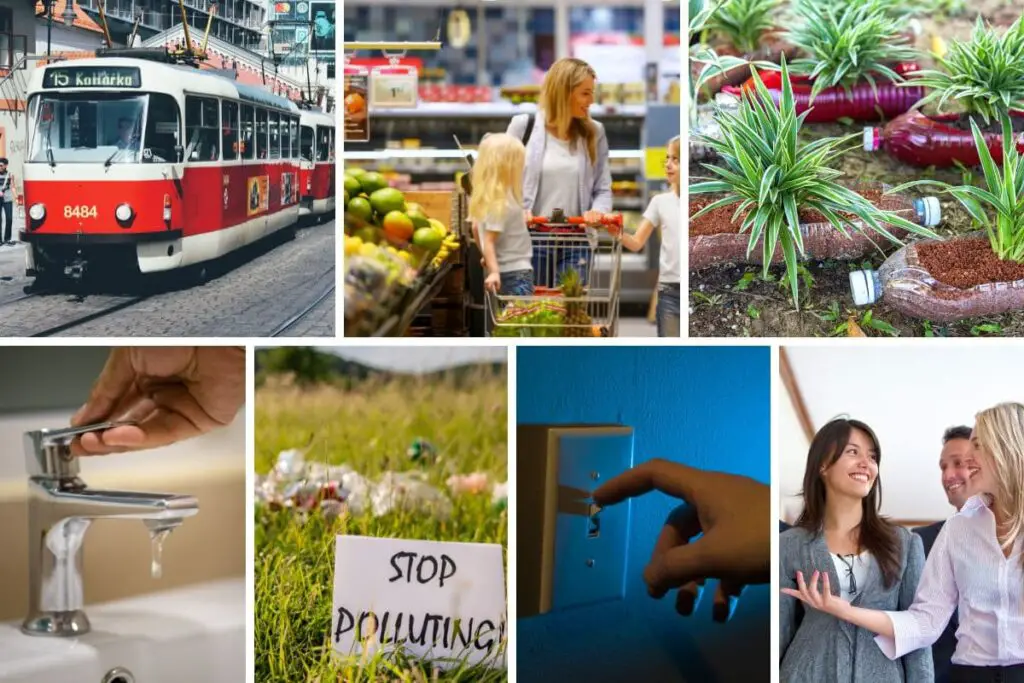
Sustaining the Reversal of Long-Term Environmental Harm
We should be thankful for the positive human impact actions championed by environmental advocates, policymakers, companies, and ordinary citizens have had in recent years. However, the good we have done won’t matter decades and centuries from now if the positive change is not sustainable.
This reversal of long-term environmental harm is not something that one generation can do. It is a continual process of changing attitudes, policies, and human practices. That we are working to ensure these trends continue beyond our lifetime is clear. We can see it in increasing awareness of environmental issues and the push for green policies.
Through greater awareness and broader conversations surrounding environmental safety, we can sustain the positive impact humans have had on the environment for generations to come.
Final Thoughts
Making a positive impact on the environment doesn’t take a singular act. It takes many actions by entire communities and populations.
In recent years humans have taken many positive steps to extend the life of the planet. They include:
- recycling paper & plastics and other materials
- reusing materials to reduce waste
- conserving water and energy
- building marine parks, nature reserves, and greener cities
- passing environmental protection laws, and
- innovating sustainable solutions.
Maintaining the momentum by educating our children and convincing the ignorant is also a vital part of the process.
Hopefully, these steps will positively impact the environment, bringing both humans and all other species on the planet benefits for generations to come.
FAQs
How can individuals impact on the environment in their daily lives?
Individuals can contribute by adopting eco-friendly habits, making sustainable choices in consumption, reducing waste, and conserving energy in their daily activities.
What are some examples of industries or businesses that have a positive impact on the environment?
Certain industries and businesses prioritise environmentally friendly practices, including sustainable sourcing, eco-conscious production processes, and initiatives such as renewable energy adoption and reforestation.
How does sustainable agriculture contribute to a positive human impact on the environment?
Sustainable agriculture practices, such as soil conservation, reduced chemical use, and biodiversity support, contribute positively to the environment. Consumers can also make choices that support sustainable farming.
What role does renewable energy play in achieving a positive human impact on the environment?
Renewable energy sources like solar, wind, and hydro contribute significantly to reducing environmental impact by replacing fossil fuels. Supporting and investing in clean energy initiatives ihave a positive impact.
How can communities work together to create a positive impact on the environment?
Communities can create a positive impact by engaging in collaborative efforts, such as community clean-up initiatives, local conservation projects, and establishing eco-friendly policies. Education and awareness play a key role in fostering a collective commitment to environmental sustainability.
Related Posts
Why not Join Us
If you enjoyed this article, we would like to offer you two gifts – our Starter Pack of 4 James King’s books and our Weekly Digest, which you can receive by email.

